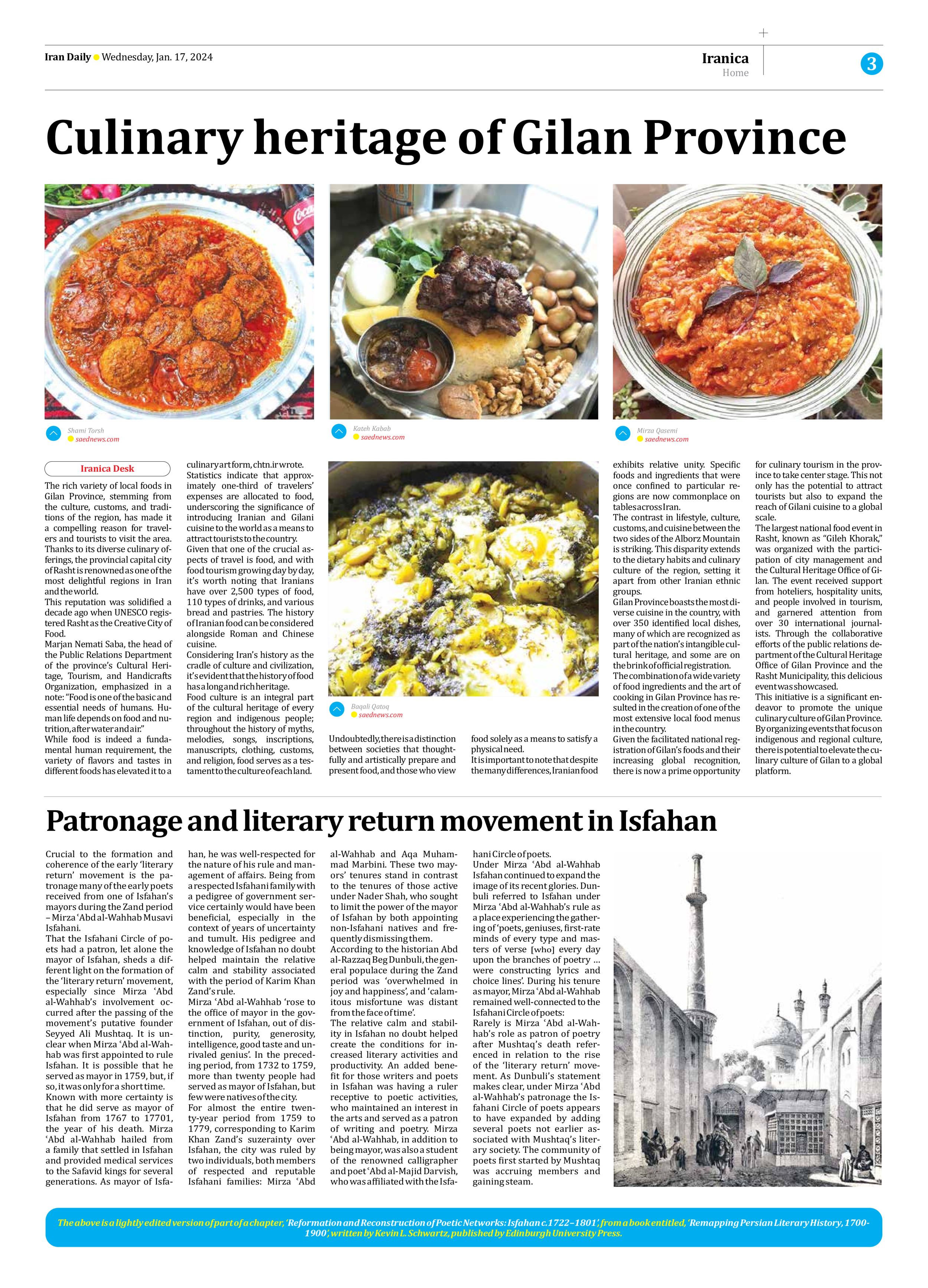
Patronage and literary return movement in Isfahan
Crucial to the formation and coherence of the early ‘literary return’ movement is the patronage many of the early poets received from one of Isfahan’s mayors during the Zand period – Mirza ʿAbd al-Wahhab Musavi Isfahani.
That the Isfahani Circle of poets had a patron, let alone the mayor of Isfahan, sheds a different light on the formation of the ‘literary return’ movement, especially since Mirza ʿAbd al-Wahhab’s involvement occurred after the passing of the movement’s putative founder Seyyed Ali Mushtaq. It is unclear when Mirza ʿAbd al-Wahhab was first appointed to rule Isfahan. It is possible that he served as mayor in 1759, but, if so, it was only for a short time.
Known with more certainty is that he did serve as mayor of Isfahan from 1767 to 17701, the year of his death. Mirza ʿAbd al-Wahhab hailed from a family that settled in Isfahan and provided medical services to the Safavid kings for several generations. As mayor of Isfahan, he was well-respected for the nature of his rule and management of affairs. Being from a respected Isfahani family with a pedigree of government service certainly would have been beneficial, especially in the context of years of uncertainty and tumult. His pedigree and knowledge of Isfahan no doubt helped maintain the relative calm and stability associated with the period of Karim Khan Zand’s rule.
Mirza ʿAbd al-Wahhab ‘rose to the office of mayor in the government of Isfahan, out of distinction, purity, generosity, intelligence, good taste and unrivaled genius’. In the preceding period, from 1732 to 1759, more than twenty people had served as mayor of Isfahan, but few were natives of the city.
For almost the entire twenty-year period from 1759 to 1779, corresponding to Karim Khan Zand’s suzerainty over Isfahan, the city was ruled by two individuals, both members of respected and reputable Isfahani families: Mirza ʿAbd al-Wahhab and Aqa Muhammad Marbini. These two mayors’ tenures stand in contrast to the tenures of those active under Nader Shah, who sought to limit the power of the mayor of Isfahan by both appointing non-Isfahani natives and frequently dismissing them.
According to the historian Abd al-Razzaq Beg Dunbuli, the general populace during the Zand period was ‘overwhelmed in joy and happiness’, and ‘calamitous misfortune was distant from the face of time’.
The relative calm and stability in Isfahan no doubt helped create the conditions for increased literary activities and productivity. An added benefit for those writers and poets in Isfahan was having a ruler receptive to poetic activities, who maintained an interest in the arts and served as a patron of writing and poetry. Mirza ʿAbd al-Wahhab, in addition to being mayor, was also a student of the renowned calligrapher and poet ʿAbd al-Majid Darvish, who was affiliated with the Isfahani Circle of poets.
Under Mirza ʿAbd al-Wahhab Isfahan continued to expand the image of its recent glories. Dunbuli referred to Isfahan under Mirza ʿAbd al-Wahhab’s rule as a place experiencing the gathering of ‘poets, geniuses, first-rate minds of every type and masters of verse [who] every day upon the branches of poetry … were constructing lyrics and choice lines’. During his tenure as mayor, Mirza ʿAbd al-Wahhab remained well-connected to the Isfahani Circle of poets:
Rarely is Mirza ʿAbd al-Wahhab’s role as patron of poetry after Mushtaq’s death referenced in relation to the rise of the ‘literary return’ movement. As Dunbuli’s statement makes clear, under Mirza ʿAbd al-Wahhab’s patronage the Isfahani Circle of poets appears to have expanded by adding several poets not earlier associated with Mushtaq’s literary society. The community of poets first started by Mushtaq was accruing members and gaining steam.
The above is a lightly edited version of part of a chapter, ‘Reformation and Reconstruction of Poetic Networks: Isfahan c.1722–1801’, from a book entitled, ‘Remapping Persian Literary History, 1700-1900’, written by Kevin L. Schwartz, published by Edinburgh University Press.







